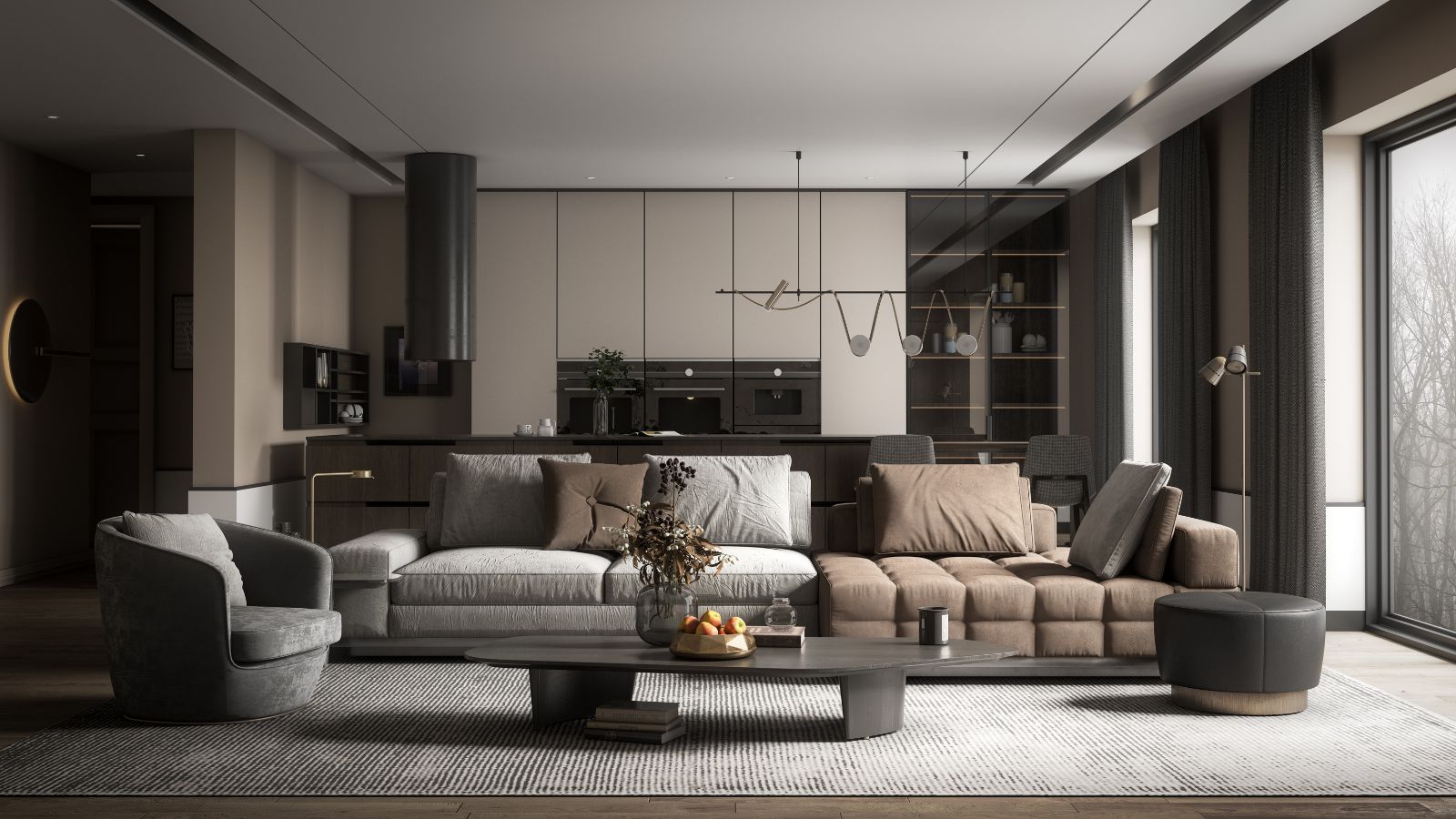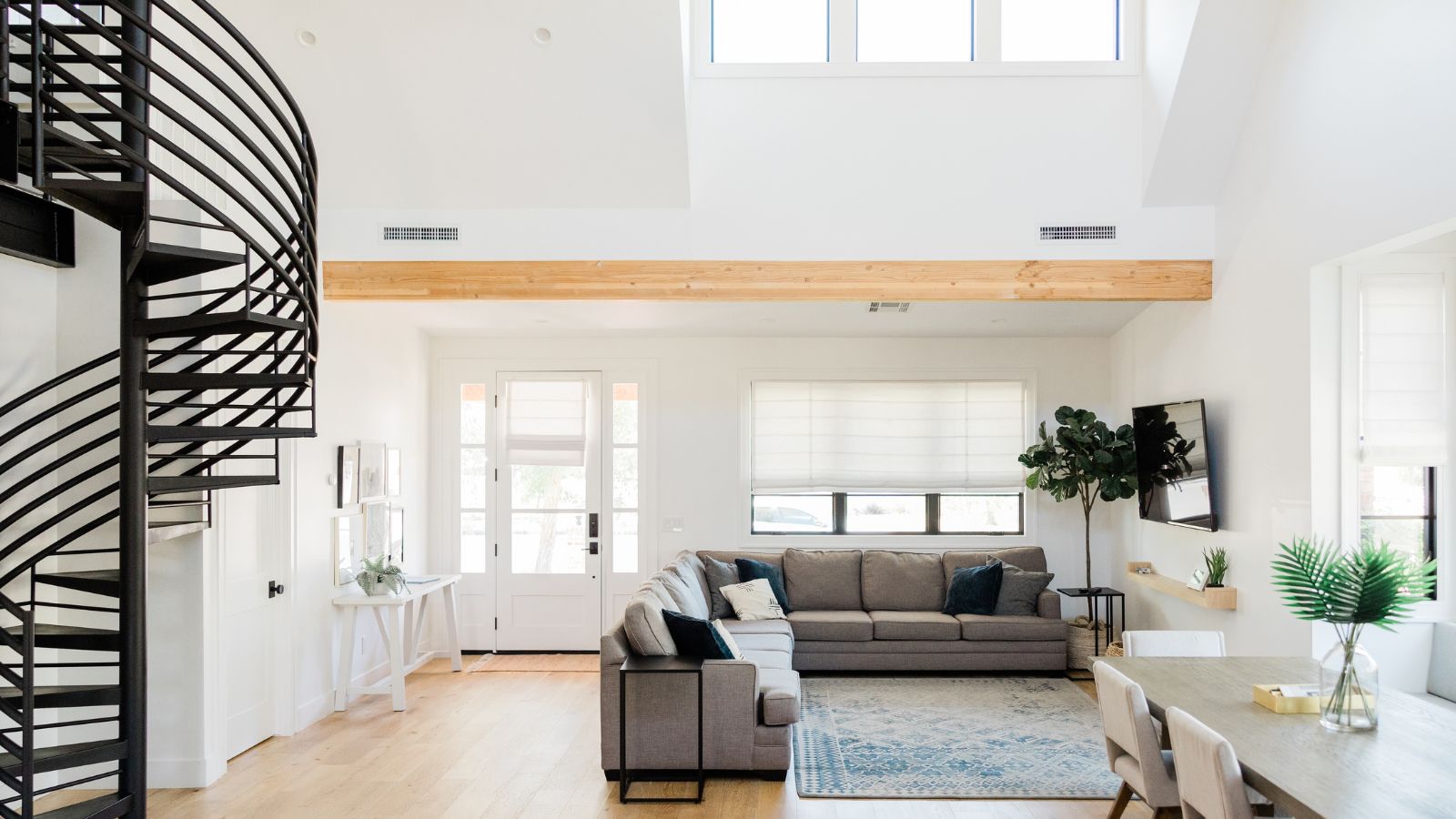Whether you’re a fan of minimalist design or you’re drawn to bold, eclectic styles, there’s something here for everyone. These ideas aren’t just visually appealing; they’re also functional, ensuring your home isn’t just beautiful, but also practical and livable.
Home Interior Design Ideas
Integrating natural elements in a home’s design not only adds distinct visual interest but also promotes a sense of peace and tranquillity. Nature’s inspirational charm can create a supportive and harmonious environment, which is why expert designers often advise taking cues from outside and bringing them in.
In the quest for a nova-chic aesthetic, indoor plants top the list. They purify air, promote mental well-being, and introduce colour. Ample choices of indoor plants, from tall leafy ferns to tiny succulents, provide flexibility to decide on individual style and space restrictions.
Raw wood finishes follow the lead, bringing in a texture and warmth that other materials often fail to offer. A handcrafted kitchen table, reclaimed wood shelving, or teak wood frames can add a rustic yet refined touch to spaces.
Tactile satisfaction is also an integral part of a home’s design. Hence, natural textiles such as linen, wool, cotton, or jute rugs and throws not only add comfort but also enhance visual intrigue.
Light is another essential element. Smart usage of natural light can profoundly transform a room while saving energy. Ensuring there’s plenty of natural light in rooms, or simulating natural light when it cannot be obtained, brings elements of nature right within the living spaces.
 Embracing Minimalism
Embracing Minimalism
In today’s fast-paced world, one might find respite in the minimalist approach to interior design. This section will delve deeper into the world of minimalism; where less is certainly more. The concept of minimalism is rooted in simplicity. It’s about incorporating essential and functional elements, getting rid of excess, and attributing value to purposeful items.
When embracing minimalism, clarity in the role of every object in the room is crucial. Apply this principle by investing in multifunctional furniture. A coffee table that doubles as storage, or a sofa that unfolds into a bed, are pertinent examples. This yields cleaner, uncluttered spaces, meaning rooms can breathe and acquire an airy sense of calm. This aligns with the intention of connecting with nature discussed earlier.
Colour is another element of minimalist design. The majority of minimalist spaces favour a monochromatic look, usually lending towards soft, neutral hues. This isn’t about being boring, on the contrary, it’s a stylish way to create a harmonious and relaxing atmosphere.
Subtlety plays a key role in minimalist design. For instance, accentuating textures found in natural materials, like the grain of raw wood or the weave of a linen throw, can bring life and interest to a minimalist room without adding visual clutter. It’s a delicate balance that works harmoniously with the raw material flows mentioned earlier in the article.
 Playing with Color Palettes
Playing with Color Palettes
Colour palettes represent an essential aspect of interior design. They determine the ambience, mood, and visual appeal of living spaces. Therefore, they should not be taken lightly.
Understanding colour’s impact is key to mastering its use in interior design. Colours have the power to evoke emotional responses. For instance, blues and greens instil feelings of tranquillity and calm, while yellows and oranges foster liveliness and positivity.
Taking a step back from monochromatic schemes often associated with minimalism, designers can explore an array of colour options. For example, the concept of color blocking brings in a vibrant and dramatic feel to space. It’s geared towards creating exciting contrasts using broad strokes of distinct, bold colours.
Incorporating various hues doesn’t mean moving away from the principles of minimalism, though. One could choose a neutral base colour for walls and larger furniture pieces and then use accessories and decor to introduce a splash of colour. This approach maintains simplicity while providing a unique personality to rooms.
Another trend gaining traction is the use of pastel palettes. Pastels inject softness and serenity into the room. They’re perfect for those who love colour but prefer a subtler, more muted expression.
Colour palettes can also be inspired by nature. The green of a plant, the inky blue of the night sky, or the golden hues of a sunset could serve as perfect palette bases. Since we have been connecting interior spaces with nature, these natural hues in design further create a link to the outdoor environment.